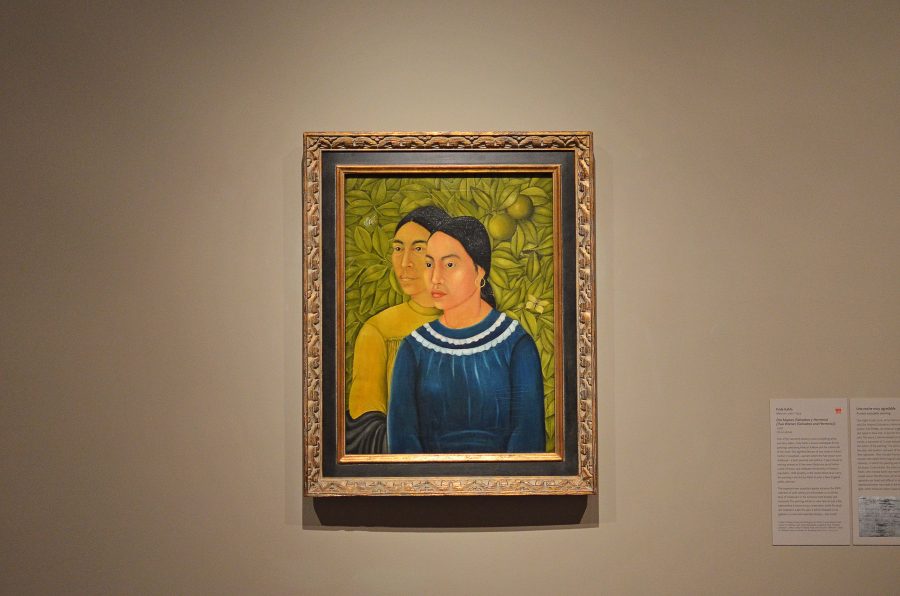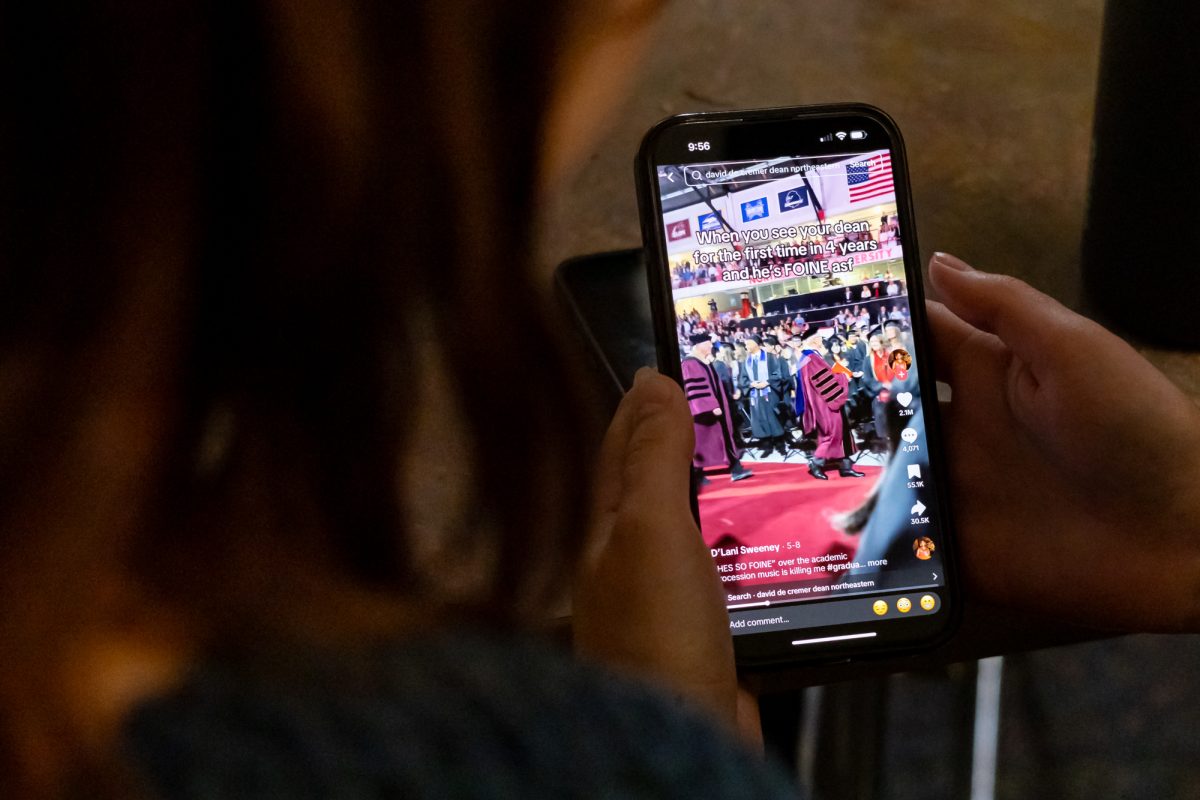By Juan A. Ramirez, news correspondent
The alleged first work ever sold by iconic Mexican painter Frida Kahlo has been purchased by the Museum of Fine Arts (MFA) and is on temporary display until March 1.
The 1928 painting, titled “Dos Mujeres (Salvadora y Herminia)” or “Two Women (Salvadora and Herminia),” is a double portrait of Kahlo’s family housemaids and is the first work by the artist to be acquired by a New England museum. The work was formerly owned by the family of Jackson Cole Phillips, an American industrialist and close friend of the artist, since its sale in 1929.
“I do think she’s seeing them in the role of saints,” Elliot Bostwick-Davis, chair of the MFA’s Art of the Americas collection, said. “In the sense that they’re people from her everyday, people she was closely connected to and is showing them with a sense of their own importance.”
Painted against a backdrop of tropical plants and wildlife, the two women are shown as distinct individuals, which has led to comparisons with Medieval portraits of the Madonna or socialist glorifications of the working person. The choice to represent these two women like this is one Bostwick-Davis hopes will attract new audiences to the museum.
“We’ve been wanting this so long,” Bostwick-Davis said. “I feel that the public outpouring for this work – young, old, those from Latin America, those from the United States – is very much a part of our changing demographic. We have to change along with the audiences in our museum, and I think what’s really great is to see how many people in the museum are so excited to have major work by a woman artist who is also representing two working women… Clearly she painted these two women as individuals and very distinctly Mexican.”
Born in 1907, Kahlo and husband Diego Rivera were artists in the Mexican Modernist movement of the first half of the 20th century. While Rivera focused on giant murals, Kahlo became well known for her portraits.
Bostwick-Davis said she knew upon first sight what displaying this early work of the artist’s would mean for the museum.
“The minute I saw it, I thought, my goodness, this would be incredible if we could acquire a Kahlo for the MFA,” Bostick-Davis said. “She’s such an iconic, distinguished artist in Latin America. Her biography has had its own sort of life of its own in attracting people to her, but her work is extraordinary, and I think that’s what is really special about this particular painting.”
Speaking about Kahlo’s status as a major Central American artist, Matthew Teitelbaum, Director at the Museum, highlighted the significance of the acquisition.
“Frida Kahlo’s work is a 20th century touchstone,” Teitelbaum said. “As our community continues to grow and evolve, we’re committed to representing the diverse experiences of artists in our galleries.”
The work is currently on display in the Museum’s Carol Vance Wall Rotunda against a collection of John Singer Sargent sketches. The entrance of the museum makes it possible for the painting to be overlooked, though others, such as Elizabeth Hunter, a Boston-area visitor of the museum, find significance in its placement.
“It’s definitely the work of an artist,” Hunter said. “I find there’s a dynamic tension between looking at it there and then looking at these Sargent drawings: Each artist is trying to do something very personal, each in their own way, and both are very successful. It really proves that there’s more than one way to skin a cat and more than one artistic language that can be used to achieve greatness.”
Kasey Fox, a Boston-area visitor, said that she found the work stunning.
“I love what Frida stands for and I feel like that informs what I feel for the painting itself,” Fox said.
Something not visible in its current placement is a number of signatures from friends and relatives present at the painting’s sale in Mexico City. Though the painting will undergo conservation treatment beginning in March, it will be reinstalled in the Museum’s Art of the Americas wing later in the year, where Bostwick-Davis hopes to better showcase the work.
“We do hope we can collaborate with our designers and curators to have people be able to go around the back of the picture,” Bostwick-Davis said. “To open it up so it’s free-floating and people can see, in the back, all of these signatures since it’s such a part of the story of the work.”
The painting will be accompanied by a number of artifacts, photographs and letters from Kahlo, Rivera and Phillips, allowing for a greater understanding of the work and its significance. Kahlo, who was 21 at the time she completed the painting, had yet to become a household name and was beginning her career, something Bostwick-Davis hopes students and young artists will identify with.
“I do think there’s something really raw in that these young artists really pour their heart and soul into their work,” Bostwick-Davis said. “She chose two subjects close to her family circle, as many young artists often do.”
Photo by Robert Smith









